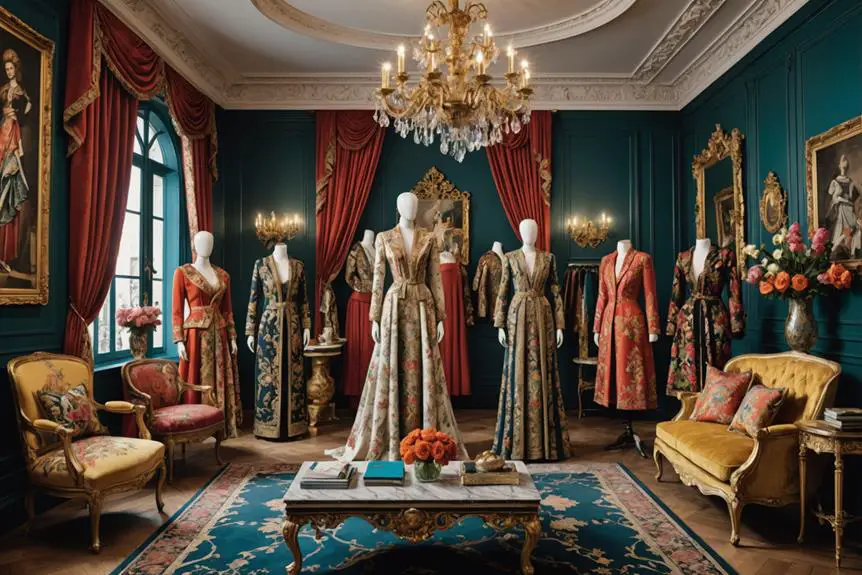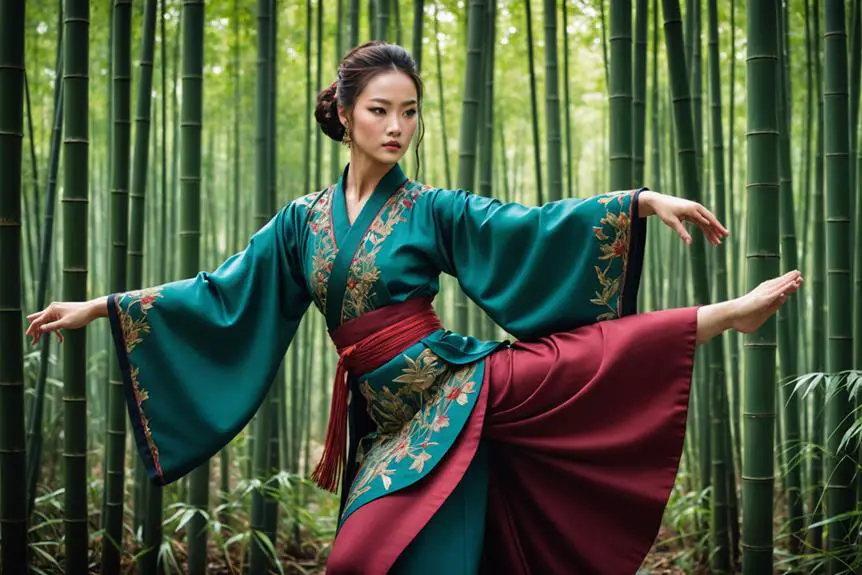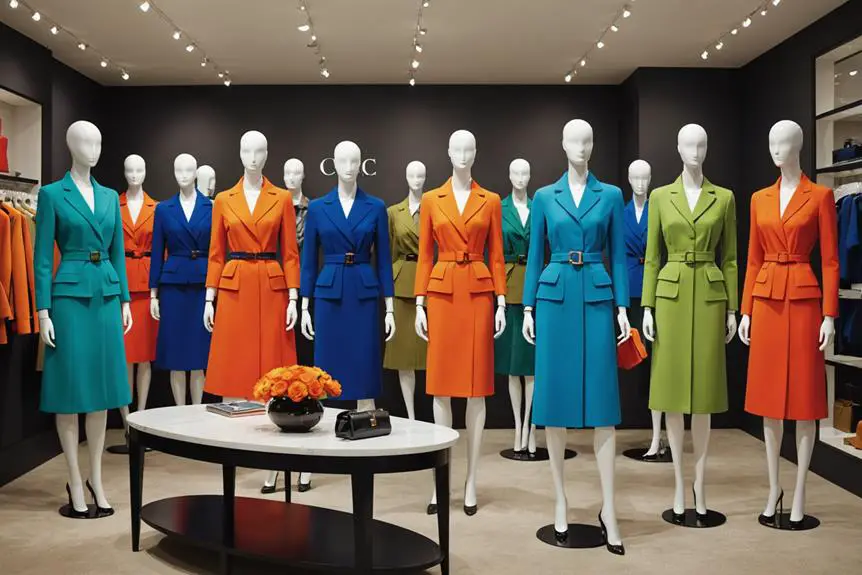The designers behind Dolce & Gabbana are Stefano Gabbana and Domenico Dolce. They started their journey in 1982, combining their unique backgrounds from Milan and Sicily. Their first womenswear collection debuted in 1985, marking the beginning of a prolific career that embraces Italian craftsmanship and bold, vibrant designs. Over the years, they've made waves with their innovative marketing and iconic collaborations, like designing costumes for Madonna. Despite facing controversies, their commitment to quality and heritage keeps them influential. Curious about how they shaped the fashion world? You'll discover plenty of fascinating insights ahead.
Founders and Early Life
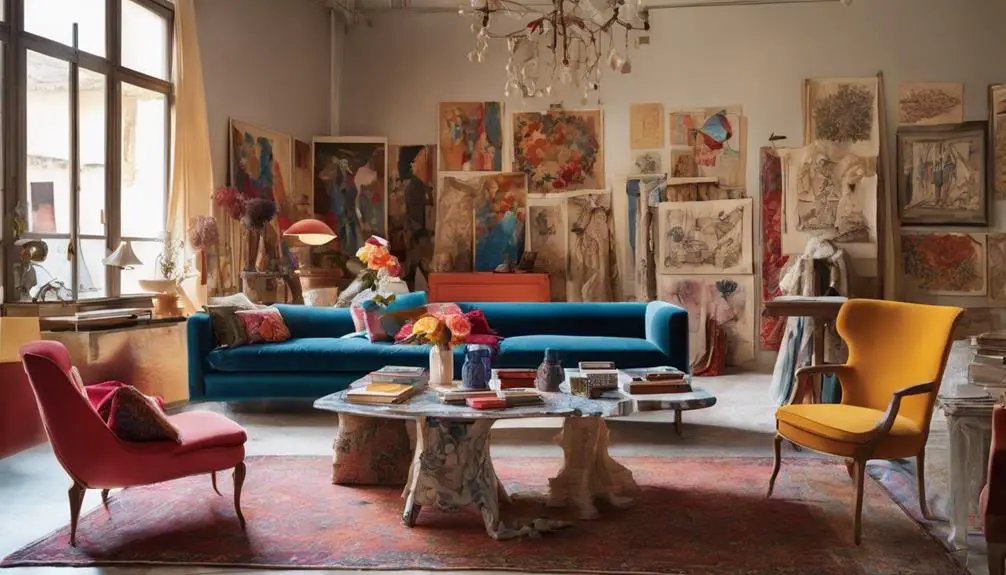
Growing up in Italy, Stefano Gabbana and Domenico Dolce were shaped by their diverse cultural backgrounds, which would later influence their unique design aesthetics.
Stefano was born in Milan, a bustling fashion hub, while Domenico hailed from the charming Sicilian town of Polizzi Generosa. This mix of urban and rural Italian life introduced them to a rich tapestry of traditions, colors, and styles that would become central to their creations.
Both Italian designers pursued their passion for fashion early on. Gabbana graduated from the Istituto Superiore per le Industrie Artistiche in Rome, where he learned the essential principles of design.
Meanwhile, Dolce's experiences in Sicily instilled in him a deep appreciation for craftsmanship and heritage. Their paths crossed in 1982 while working for designer Giorgio Correggiari, setting the stage for their future partnership.
In 1983, they took a leap and established a design consulting studio, marking their first step into the fashion industry.
By 1985, they launched their first womenswear collection during Milan Fashion Week, proudly debuting the Dolce & Gabbana brand.
Although their initial collection, "Donne Vere/Real Women," faced disappointing sales in 1986, their determination never wavered.
Supported by family and fueled by their passion, they persevered, laying the groundwork for what would become one of the most iconic brands in fashion history.
Career Milestones and Growth
Throughout their career, Dolce & Gabbana have achieved remarkable milestones that solidified their status in the fashion industry. Founded in 1985 by Domenico Dolce and Stefano Gabbana, their journey began with a design consulting studio established in 1983. The duo showcased their first collection at the Milano Collezionis Nuovi Talenti fashion show in October 1985. This debut marked a significant step in their mission to redefine luxury fashion, emphasizing a unique vision rooted in Italian craftsmanship and drawing inspiration from the rich heritage of Italian designers like Versace, known for their bold aesthetics and high-quality materials the evolution of luxury fashion.
By 1991, their menswear collection won the prestigious Woolmark Award for innovation, highlighting their exceptional influence in the industry. This recognition not only validated their design approach but also set the stage for future success.
In 1994, they launched the D&G brand, targeting a younger audience and expanding their reach even further. This strategic move allowed them to diversify their offerings while maintaining the essence of Made in Italy.
As the years progressed, their brand grew exponentially. By 2009, Dolce & Gabbana operated 113 stores worldwide, employing around 3,500 people and achieving an impressive annual turnover of over €1 billion.
These career milestones reflect not just a thriving business, but also a commitment to excellence and innovation in luxury fashion. With each step, Domenico Dolce and Stefano Gabbana have carved a niche for themselves, continually pushing boundaries and inspiring future generations in the fashion world.
Their story is a reflection of ambition, creativity, and the enduring power of collaboration.
Cultural Impact and Collaborations
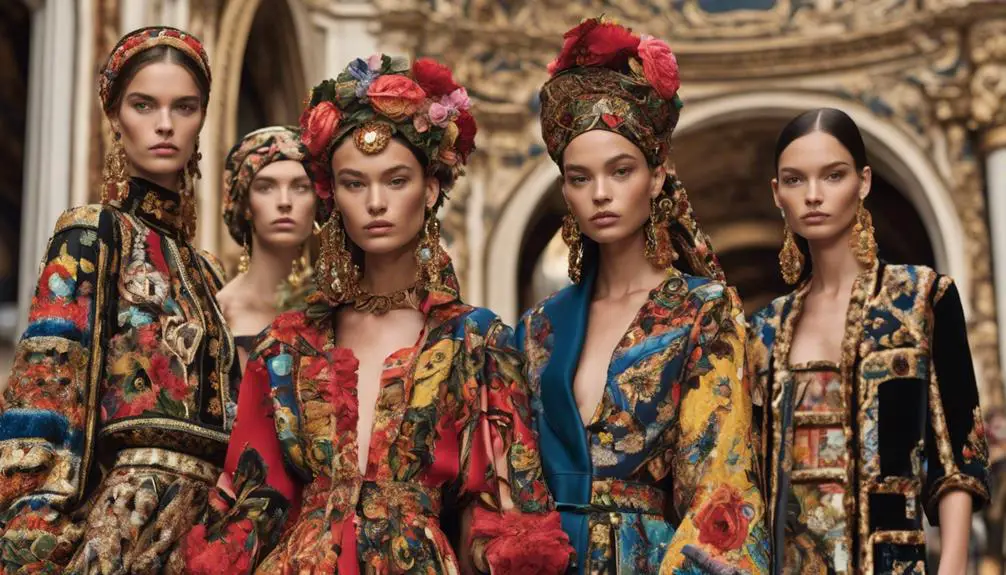
Dolce & Gabbana's cultural impact extends far beyond the runway, shaping conversations in fashion, art, and social issues. Founded by designers Dolce and Stefano Gabbana, their innovative approach has consistently pushed boundaries. One notable example is their collaboration with Madonna, where they designed over 1500 costumes for her Girlie Show in 1993. This partnership not only showcased their influence in the entertainment industry but also highlighted their ability to blend fashion with performance art.
The brand isn't afraid to engage in cultural conversations, as seen in their controversial ad campaigns. In 2006, they featured same-sex couples, a bold move that emphasized their commitment to diversity and inclusion. This willingness to tackle social issues places them at the forefront of progressive fashion.
Their recognition for innovation started early, winning the Woolmark Award in 1991, which solidified their status in the fashion industry. Furthermore, their collaboration with A.C. Milan since 2004 to design on-field attire demonstrates how they merge athleticism with high-end design, influencing sports fashion too.
Recently, Dolce & Gabbana made headlines by launching an NFT collection in 2021, marking their foray into digital art. This reflects their adaptability and keen engagement with contemporary cultural trends.
Through these collaborations and initiatives, Dolce and Stefano Gabbana continue to shape and redefine cultural conversations, leaving an indelible mark on both fashion and society.
Controversies and Legal Issues
Amidst their fashion triumphs, controversies and legal issues have often shadowed Dolce & Gabbana. You can't ignore the tumultuous moments that have sparked public outcry and raised eyebrows about the brand.
Let's explore some key events that define their turbulent relationship with public perception:
- In 2013, the designers faced a tax evasion conviction, receiving a 20-month suspended prison sentence for undeclared income from a Luxembourg-based subsidiary.
- After appealing, they were acquitted in 2014, reversing their earlier conviction, but the legal troubles highlighted the scrutiny faced by high-profile figures.
- Controversial comments made by Gabbana in 2015 about IVF ignited backlash, with public figures like Elton John openly criticizing their views on family and reproductive rights.
- In 2018, racist comments attributed to their Instagram account caused a significant backlash, leading to the cancellation of a planned fashion show in Shanghai—a situation the brand attributed to hacking.
Throughout these incidents, public perception shifted, forcing Dolce & Gabbana to navigate a complex landscape where fashion and social responsibility collide.
These controversies reveal the challenges Dolce & Gabbana face as they balance creativity with societal expectations. Each incident not only impacts their brand but also sparks discussions about the broader implications of their comments and actions, reminding us that the world of fashion isn't just about style; it's intertwined with culture and ethics.
Legacy and Future Directions
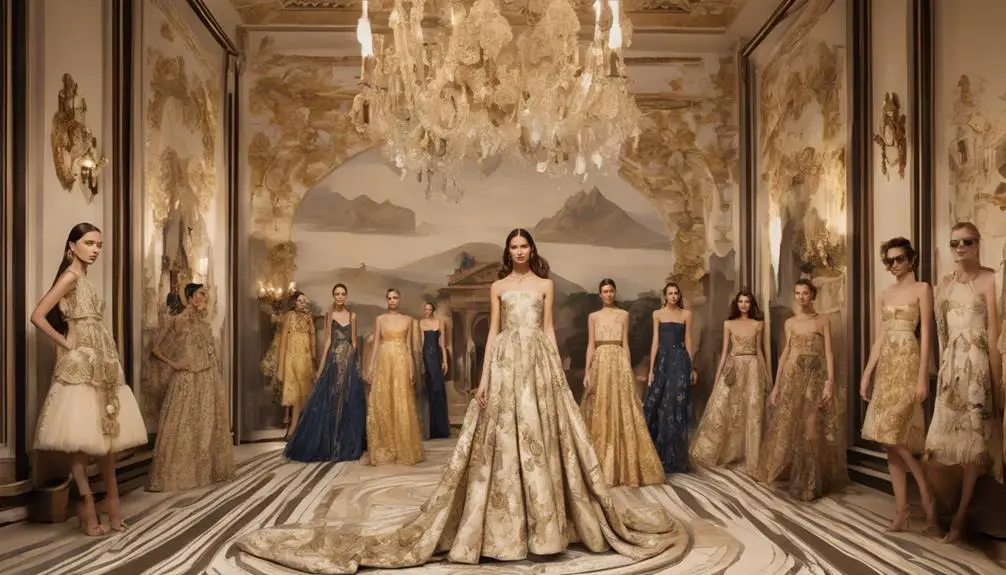
At the heart of Dolce & Gabbana's legacy lies a deep appreciation for Italian craftsmanship and cultural heritage, elements that continue to shape their design philosophy. This philosophy is evident in their iconic collections, such as the Sicily collection, which celebrates traditional designs and Mediterranean aesthetics.
You'll notice that every piece they create reflects this dedication, showcasing the beauty of Italian artistry. With 344 boutiques worldwide and a team of 5,400 talented individuals, Dolce & Gabbana has cemented its place as a powerhouse in the fashion industry.
Their commitment to quality is evident, as Italian-made products are highly sought after, often seen as premium goods on the global stage. However, the designers know that to remain relevant, they must evolve. This is where sustainability and innovation come into play. By participating in initiatives like the Gen D Designer Generation, they're setting their sights on a future that balances tradition with modern values.
Looking ahead, Dolce & Gabbana is focused on collaborating with emerging designers, ensuring that the brand stays fresh while honoring its roots. This blend of innovation and a steadfast commitment to Italian fashion allows them to adapt to contemporary trends without losing their unique essence.
Their legacy isn't just about what they've achieved; it's about how they're shaping the future of fashion. As you explore Dolce & Gabbana, remember that their journey is about more than clothes; it's about a rich legacy that continues to inspire and innovate, reflecting the beauty of Italian culture in every stitch.
